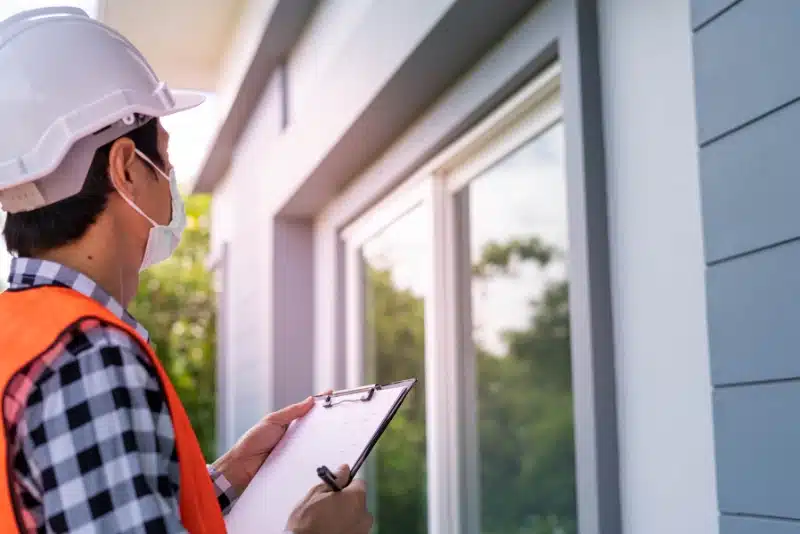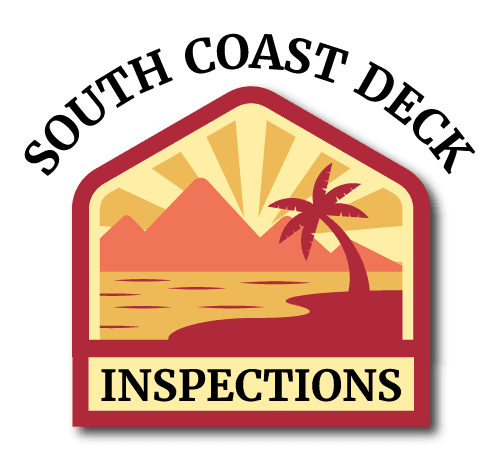
SB 721 & SB 326 deck inspections – The sun is blazing. A family laughs on a sunny deck. Suddenly… “CRACK!” Boards wobble. Mom gasps. Dad drops lemonade. Kids freeze.
You wonder: Is the deck safe? What stops a tragic fall? Enter SB 721 deck inspection law in California—the state’s legal safeguard for decks, balconies, and walkways.
Back in 2015, a balcony collapse in Berkeley killed six students. California responded. SB 721 passed in 2018 and took effect in 2019. Now, every deck over six feet in buildings with three or more units needs a professional safety inspection.
It’s 2025. Who’s up next? What deadlines loom? What fixes will pop up? Who’s legally authorized to inspect these structures?
Let’s break it down.
Who Needs an SB 721 Deck Inspection in California in 2025?
Own a triplex? Run a block of flats? Have balconies six feet in the air? You’re covered.
SB 721 applies to wood-framed buildings with 3+ residential units that have elevated exterior elements like decks, balconies, stairs, or walkways more than six feet above ground—especially when space below is occupied.
It’s not about aesthetics. It’s about structural integrity—joists, beams, fasteners—any part that could fail under stress.
🔧 Update: Legal guidance now states clearly that inspections must be conducted by a licensed architect or structural engineer—not by building owners, general contractors, or unlicensed individuals.
Inspection reports must be signed and stamped by the professional.
Deadline: January 1, 2026
(Extended from Jan 1, 2025, via AB 2579)
Skip the deadline, and you may face steep fines and legal exposure. Don’t wait
Do Condos Count?
SB 721 & SB 326 deck inspections. No. Condominiums follow SB 326, which applies to HOA-governed properties. SB 721 is strictly for rental buildings, including apartment complexes
What About Townhomes?
If rented out as three or more units and they have elevated exterior structures, yes, you’re under SB 721.
Private single-family townhomes? You’re exempt—for now.
Is My Building Affected by SB 721 Deck Law in California in 2025?
Quick SB 721 Compliance Checklist for 2025
✅ Built before January 2019?
✅ Three or more residential units?
✅ Wood-framed exterior decks, balconies, landings, or stairs?
✅ Elevated six feet or more?
✅ No inspection yet?
You’re due by January 1, 2026.
🔧 Who Can Perform an SB 721 Inspection in 2025?
🔧 Correction: Only a licensed architect or structural engineer is legally authorized to perform and sign off on inspections under SB 721.
General contractors—even those with B or C-5 licenses—do not meet the current legal requirement.
Inspectors must submit a stamped report.
It ensures impartiality, technical competence, and full legal compliance.
How the SB 721 Inspection Process Works
-
Hire a Qualified Professional
🔧 Hire a licensed architect or structural engineer. Ensure they have experience with SB 721-compliant inspections and can provide a stamped report.
-
Inspect a Statistically Significant Sample
At least 15% of each type of exterior elevated element must be inspected.
Invasive testing may be necessary if deterioration is suspected.
-
Receive a Written Report Within 45 Days
Must include photos, identified hazards, and structural risk.
-
Respond to Findings
- Immediate Threats: Repaired within 15 days
- Non-Urgent Issues: Repaired within 120 days (with proper permits)
- Recordkeeping
🔧 Keep inspection and repair records for at least 12 years (two cycles).
These may be requested by local authorities, buyers, or insurance agents.
🔧 Conflict of Interest Rules
🔧 Update: The inspector may not be the same party performing repairs.
This separation helps prevent biased reporting and aligns with SB 721 conflict-of-interest provisions.
Common Issues Uncovered
- Dry rot in structural beams
- Rusted metal connectors
- Water-damaged flashing
- Failing waterproof membranes
- Loose or sagging railings
- Poor drainage contributing to decay
Early identification saves tens of thousands in repairs—and possibly lives.
What If My Building Was Built After 2019?
If your property was inspected during construction and received final approval by Jan 1, 2019, you’re temporarily exempt. But your first SB 721 inspection will be due six years from that approval date.
Conversion to Condos?
If you’re converting to condos after Jan 1, 2019, you must complete a full SB 721 inspection and submit the report to the California Department of Real Estate before selling the first unit.
What’s Next for SB 721?
- Tech Evolution: Drones and thermal imaging are being used more often—faster, safer, and data-rich.
- Stricter Credentials: Future changes may require inspectors to hold additional certifications (e.g., infrared analysis, drone operation).
- Expanded Scope: The law could one day include commercial decks and single-family homes with elevated walkways or patios.
From Wobble to Wow: Your Deck, Inspected Right
Sunset. Solid deck. Family relaxed. No creaks. No panic.
Why? South Coast Deck Inspections found and flagged weak beams, corroded anchors, and more—all inspected by licensed engineers under full SB 721 compliance.
✅ Certified reports, stamped and legal
✅ Fast turnarounds
✅ Serving all of Southern California
🔧 Don’t delay. Inspections must be stamped by an architect or structural engineer. DIY isn’t just risky—it’s non-compliant.
📅 Book before the deadline.
📞 Call South Coast Deck Inspections now.
🗺 View our service map and get compliant with confidence.
